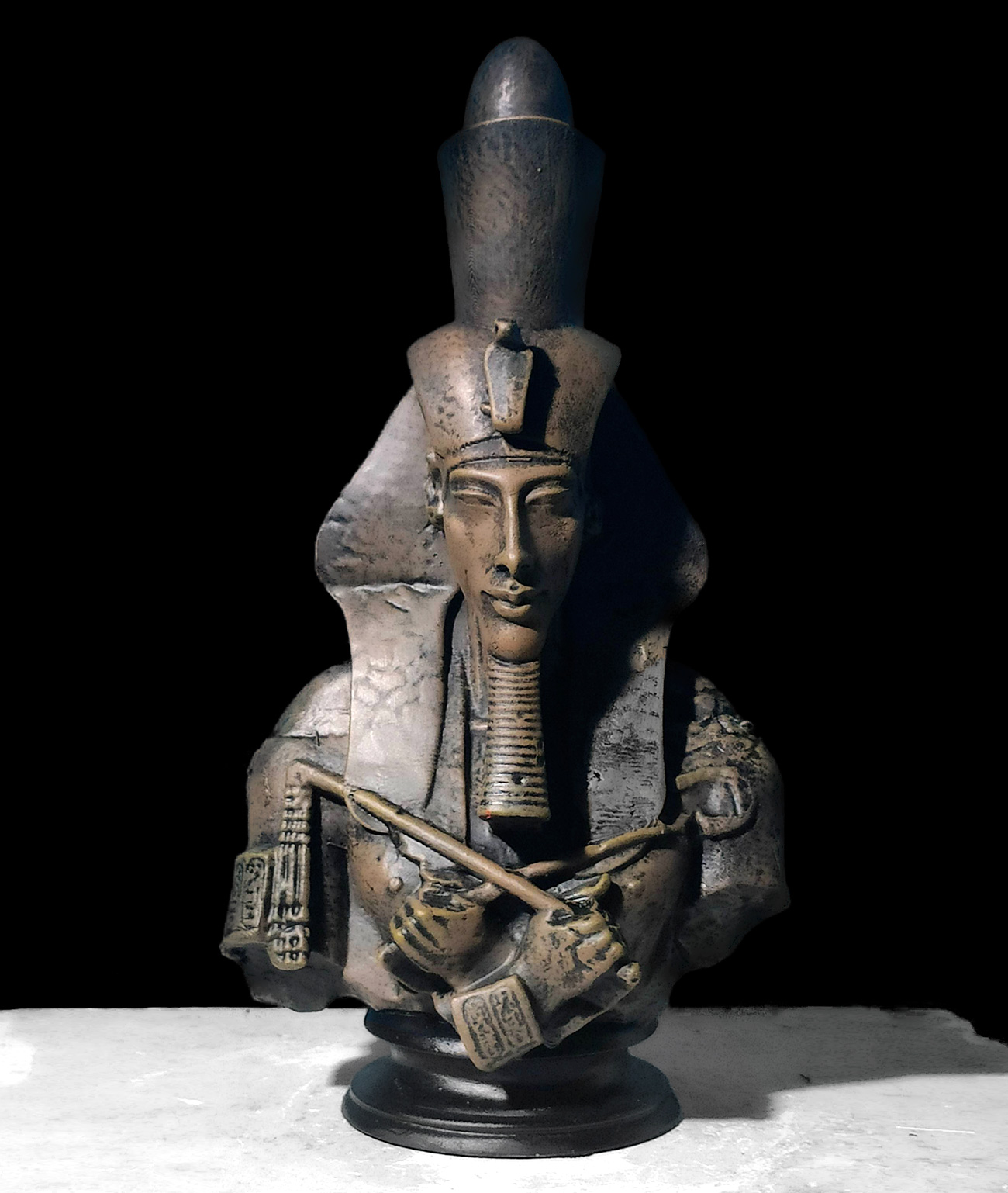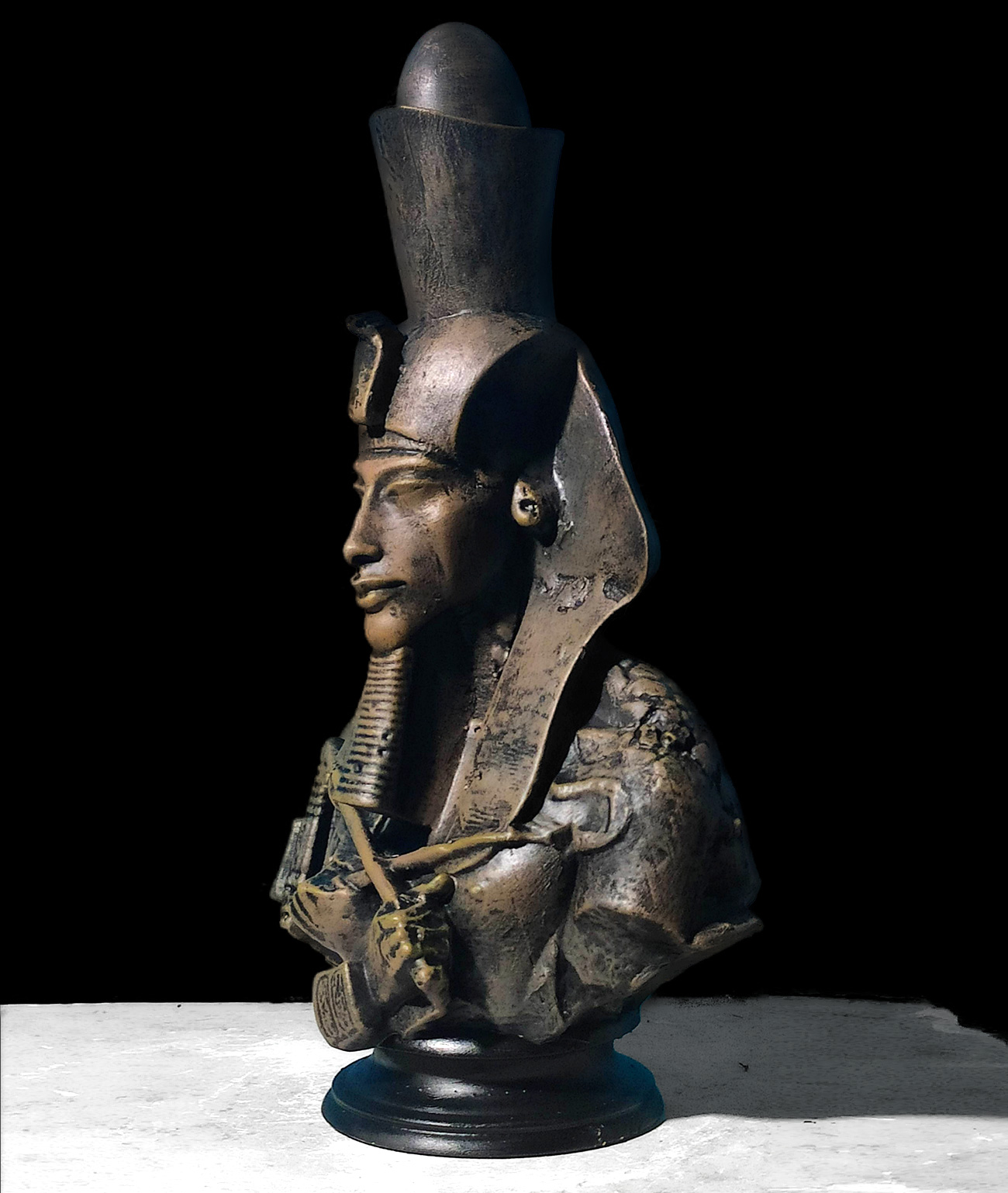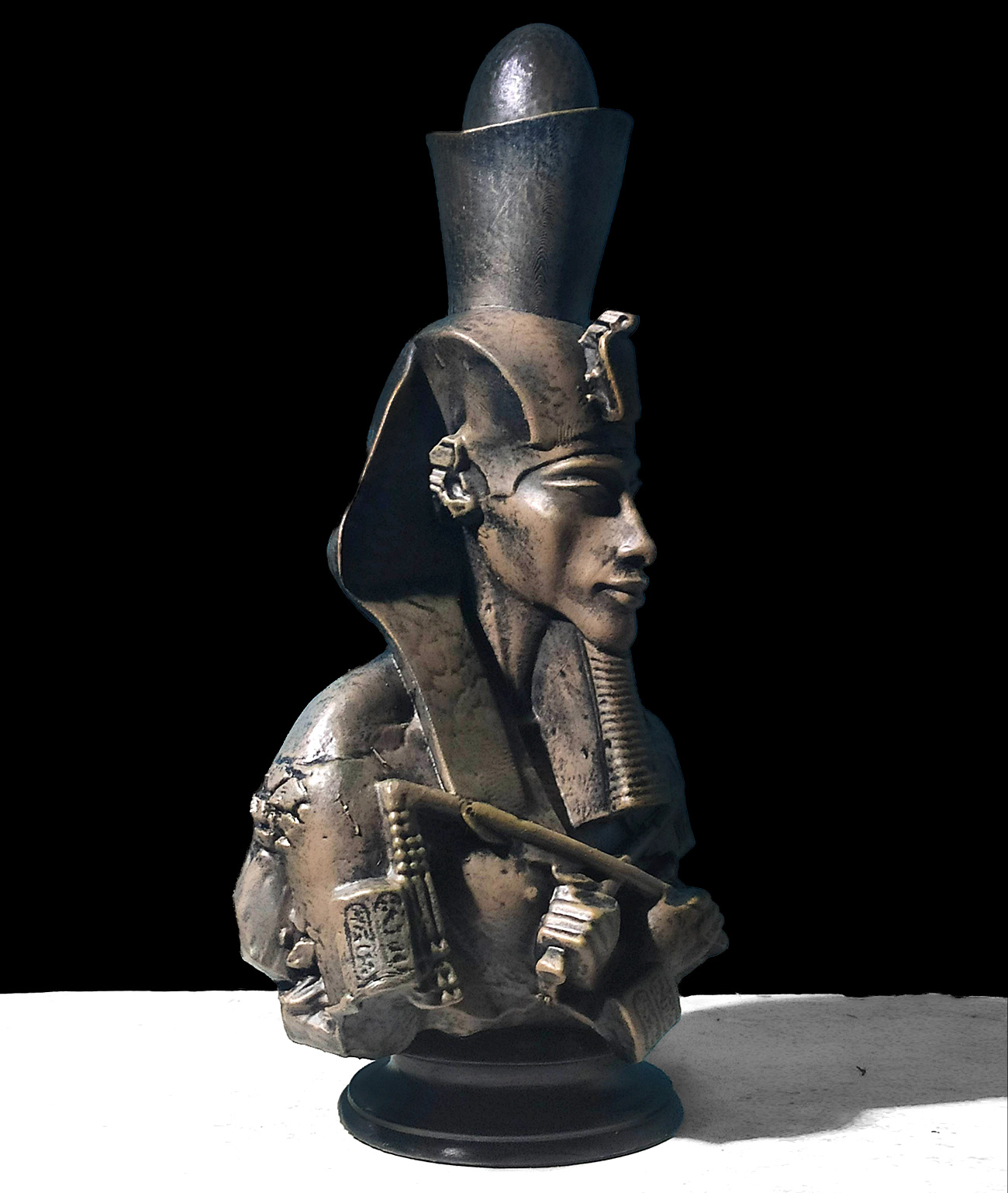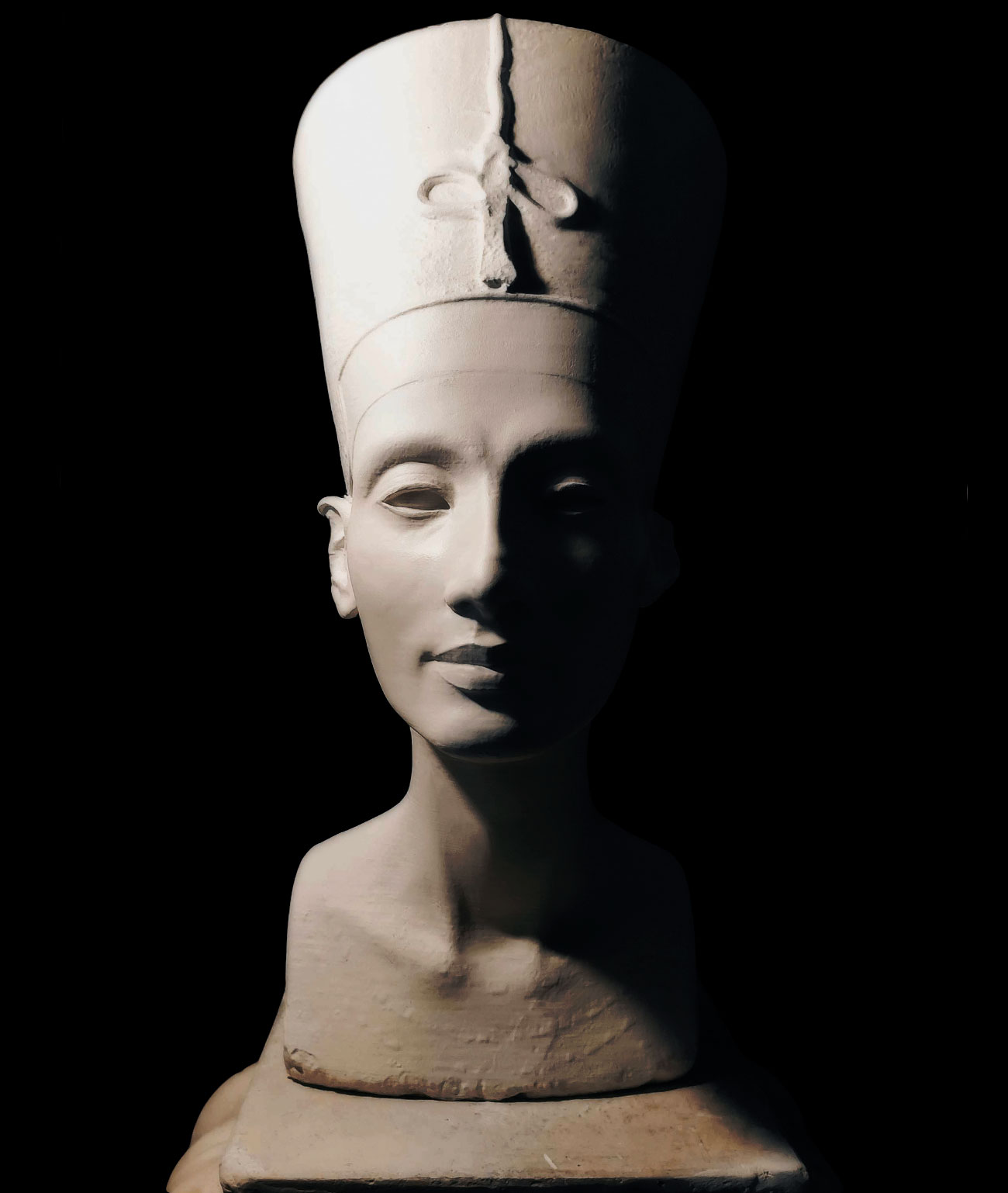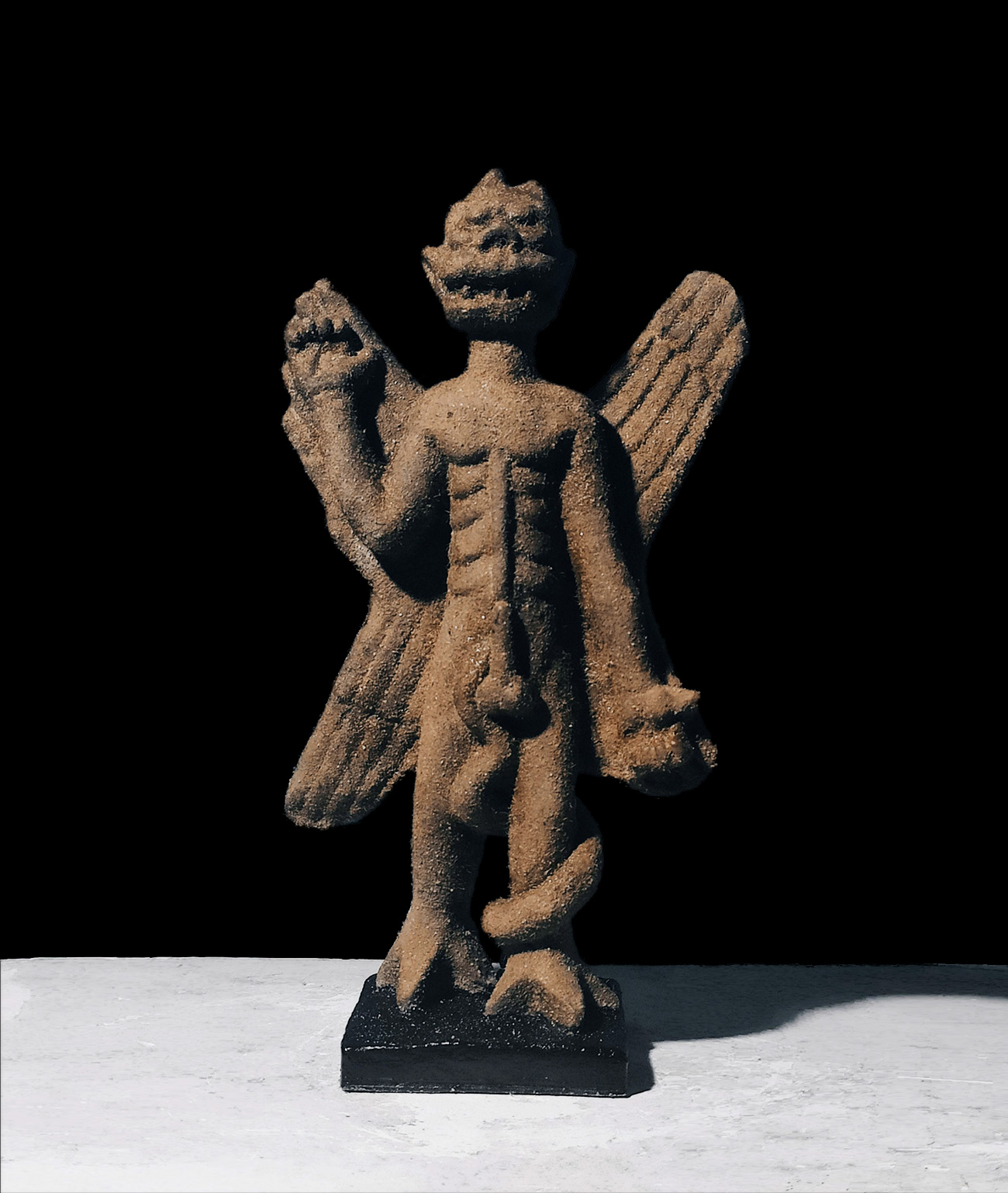Akhenaten bust. Exact replica. Exclusive piece
€79,95 – €245,00 (Inc. Tax)
Akhenaten bust 45 cm marble-antique stone effect. exact replica.
Exclusive piece that you will not find in any store as it has been made from the 3d model made by our designers.
If you want it in another color or with another finish, ask us and we will respond as quickly as possible.
The objects from the reign of Akhenaten are instantly recognizable due to their unique artistic style. Among the most striking pieces are those representing the king himself, many of which have led Egyptologists to question the pharaoh’s health and physical appearance. An outstanding example is that of the Colossal Statue of Gempaaton: a massive full-body statue of Akhenaten that features distinctive characteristics. The king’s face is long and slender, with elongated eyes and large, full lips. His figure is equally peculiar and disproportionate, with thin arms, long fingers, a belly, hips, and feminine breasts. This particular statue is fragmented and cuts the pharaoh off at the knees, but from other surviving representations of Akhenaten, it can be deduced that the pharaoh’s legs tapered from large thighs to slender calves that ended in elongated feet. At first glance, this statue is quite startling as it diverges significantly from the typical artistic conventions of Egypt. Instead of presenting the image of a young, fit, and virile king, the artistic depictions of Akhenaten convey a very different message. With such unusual bodily proportions and facial features, the pharaoh appears weak, sickly, and effeminate.
Why did Akhenaten choose to present himself this way to his subjects? As a pharaoh, he had complete control over the production and distribution of artworks and thus was undoubtedly the driving force behind these bold creative choices. Statues like the Colossal Statue of Gempaaton have led many historians to speculate about Akhenaten’s life and the possibility that the pharaoh suffered from a genetic disorder. Generations of endogamy and sibling marriages during Dynasty XVIII make this theory a very real possibility. However, most Egyptologists argue that Akhenaten’s striking face is more related to religious symbolism than capturing the literal physical likeness of the king.
Like many of his predecessors, Akhenaten believed himself to be a living deity. While most Egyptian pharaohs aligned themselves with the gods of the traditional Egyptian pantheon, such as Horus, Akhenaten chose to associate with Aten; one of the king’s many epithets was “The Dazzling Aten,” and he was believed to be the physical manifestation of the solar disk on Earth. Unlike other Egyptian deities, Aten was neutral; the solar disk was a physical object without discernible gender. It is reasonable to believe, therefore, that Akhenaten (a form of the deity himself) chose to represent himself in an equally androgynous manner. Historical and archaeological evidence has clearly shown that Akhenaten was a fertile male (he had at least six daughters and one son), but the inclusion of such prominent feminine features in artistic representations of the king conveyed a powerful message, connecting the pharaoh with the essence of Aten itself.
Throughout Akhenaten’s reign, it is known that at least two different sculptors were employed in the service of the king. The first, a man named Bak, is primarily attributed to the early and most radical Amarna-style pieces (such as the Gempaaton colossi). It has been suggested that the immediate period after Regnal Year 5 served as a kind of “experimentation period” in which Akhenaten tried to push the limits of Egyptian artistic conventions as far as possible, resulting in some of the most radical and stylized pieces of the Amarna period. In the later years of Akhenaten’s rule, Bak was replaced by another sculptor, Thutmose, who took a more restrained approach in his work. Objects recovered from Thutmose’s workshop show that the sculptor preferred a more realistic and less exaggerated style than his predecessor, with his iconic bust of Nefertiti in Berlin being the prime example.
---------- Compartir producto ----------
PRODUCTOS RELACIONADOS:
Related products
-
Pazuzu God: Deity of Protection and Wind, Exact Sumerian replica of the movie “The Exorcist”
€69,95 – €210,00 (Inc. Tax) Select options

